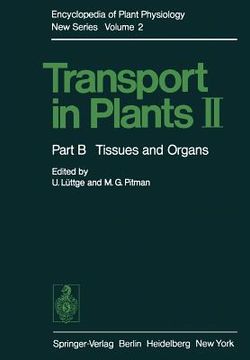Share
transport in plants ii: part b tissues and organs (in English)
U. Luttge
(Illustrated by)
·
M. G. Pitman
(Illustrated by)
·
Springer
· Paperback
transport in plants ii: part b tissues and organs (in English) - Lüttge, U. ; Pitman, M. G.
$ 104.20
$ 109.99
You save: $ 5.79
Choose the list to add your product or create one New List
✓ Product added successfully to the Wishlist.
Go to My WishlistsIt will be shipped from our warehouse between
Monday, July 15 and
Tuesday, July 16.
You will receive it anywhere in United States between 1 and 3 business days after shipment.
Synopsis "transport in plants ii: part b tissues and organs (in English)"
In the first part (Part A) of this volume on transport, there was an emphasis on the processes occurring at the membranes bounding the cells. It was convenient to distinguish active and passive processes of transport across the membranes, and to recognize that certain transport processes may be regulated by internal factors in the cells such as cytoplasmic pH, concentrations of ions, of malate or of sugar in the vacuoles, or the hydrostatic pressure. Cells in tissues and organs show the same kinds of properties as individual cells, but in addition there can be cell to cell transport related to the organization of the tissue. Firstly cells within a tissue are separated from the external solutions by a diffusion path comprising parts of the cell walls and intercellular spaces; more generally this extra-cytoplasmic part of the tissue has been called the apoplasm. A similar term is "free space". Secondly, the anatomy of cells in tissues seems to allow some facilitated, local transport between cells in a symplasm. Entry into the symplast and subsequent transport in a symplasmic continuum seems to be privileged, in that ions may not have to mix with the bulk of the cytoplasm and can pass from cell to cell in particular cytoplasmic structures, plasmodesmata. In Chara plants, this kind of transport is found operating across the multi-cellular nodes as the main means of transport between the long internodal cells.
- 0% (0)
- 0% (0)
- 0% (0)
- 0% (0)
- 0% (0)
All books in our catalog are Original.
The book is written in English.
The binding of this edition is Paperback.
✓ Producto agregado correctamente al carro, Ir a Pagar.

